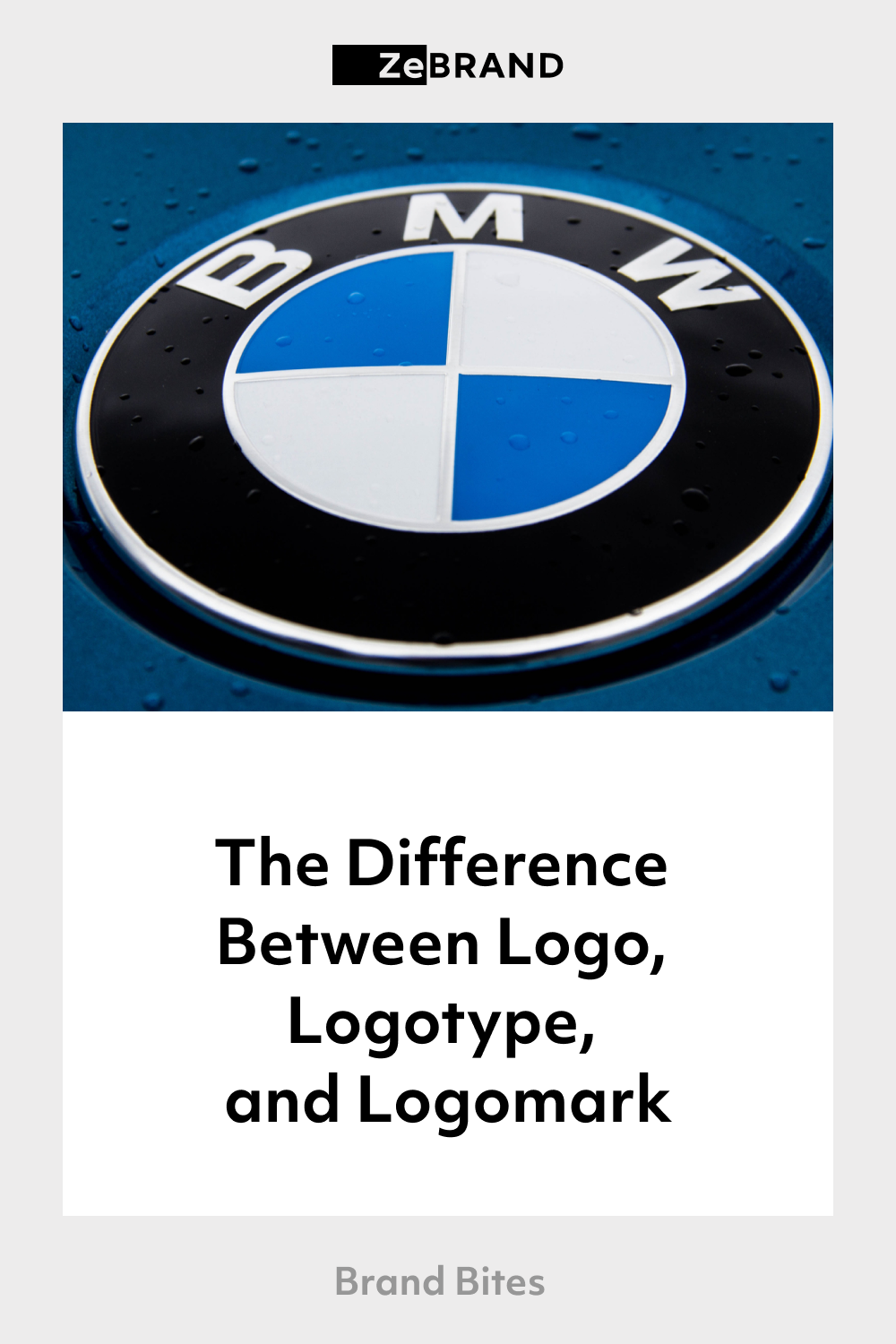Creating the Right Logo | The Difference Between Logo, Logotype, and Logomark

The white and blue of BMW’s logo are the colors of the state of Bavaria in Germany, home to BMW.
The different forms of a logo
When you are trying to find the best logo for your business, one question often comes up, especially from designers: what would you prefer -- a logomark or a logotype? What you may know as a logo can come in different forms. In this article, we break down the key differences between a logomark, logotype, and logo. Knowing this will help you decide how to choose the right logo for your business.
What is a logo?
A logo is the visual representation of your brand. It is normally made up of images and text. A good logo will be more than just that; it will show what your company does and what its values are. Having the right logo is an important step in your business development. There are many factors that you should consider when choosing one. Read more about logos here.
Core difference between a logomark and a logotype
A logotype consists of text, typically using a company’s name. Examples of this include Google and Coca-Cola. The choice of typography used in a logotype is a unique opportunity for a brand to set itself apart from other brands.
A logomark, on the other hand, is an image or symbol, for example, Nike’s swoosh or Shell’s use of a shell.
A logo may constitute a logomark, a logotype or a combination of both. Examples include Toyota and LG.
Brands will also often use their logotype, logomark, and logo interchangeably. As a business expands and the channels in which a logo can appear increases, there are various functions of its brand logos. For example, Starbucks uses its logomark, logotype or its full logo (text and image) depending on the context. In a corporate mail to its partners, it may use its full logo, but in merchandising and packaging, it may use just its logomark or logotype. A business should consider various contextual scenarios and determine the right applications for its brand logos.
Application of a logotype
A logotype includes only text, so it can be both an advantage and a challenge. Some brands have had success using or creating typography that is now associated with that brand. Coca-Cola is unimaginable without its fun, cursive logotype.
Photo by Taras Chernus on Unsplash
Some may associate pure text with a more traditional organization, such as a bank. Let us look at the applications of a logotype.
On the one hand, a logotype can make the business proposition clearer, be good for generating brand awareness and for clarifying the name of your brand. It’s worth considering though, that a logotype may seem outdated after a while and may not be appropriate for every situation.
Different businesses will use logotypes in various settings. Business like consulting, law or financial firms that want to showcase specific services or a heritage brand are examples of industries that might use a logotype.
Application of a logomark
A logomark is centered around having just a symbol or an image. A visual is a powerful way of expressing your brand identity. The shape and color of the image chosen for a logomark can all work to showcase the brand’s personality.
A logomark can be a visual representation of a brand’s mission statement and creativity. While a logotype may also do this, a logomark can be more flexible. It may take some time to generate brand awareness as the logomark may not use the business’s name but a business that has already established itself may choose to use a logomark.
Using a combination
A lot of businesses, especially those starting out, use a combination of a logotype and logomark. This way, you get the advantages of both. It is a flexible and versatile approach, providing the space and creativity to express a brand’s personality completely. Well established brands will also use these depending on the situation.
Photo by Freddy Do on Unsplash
Having both handy and then using them interchangeably is also a great option. For example, you can use your logomark in merchandising and your logotype in corporate communications. A combination of both could be used in your communications to new customers.
Whatever you choose for your business -- a logotype, logomark, or a combination -- you should maintain it as your business grows. Having a detailed style guide handy is a great process to have in place so there is no confusion in how your logo gets marketed. Testing out what works well early on is also a valuable way to establish the right visual assets for your business.



